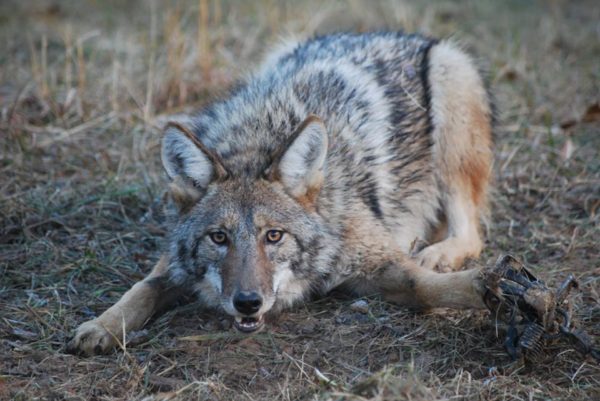Using Trail Cameras in Trapping
December 18th, 2016 by BTC Editor

“Sometimes people wonder if animals are suffering or what exactly happens after they’re trapped. After an initial period of attempting to get away — which is why trappers run multiple swivel points and laminate the trap jaws so no paw damage occurs — the animal lies peacefully until the trapper arrives to check his traps. At that point, the trapper can decide to turn it loose or harvest it, depending on the conservation goals for the property he or she is trapping.
“Trappers are the best outdoorsmen there are,” the game warden replied when I told him I trapped. It was a routine license check while deer hunting, and once that formality was out of the way we began chatting. I don’t know if I fit into THAT category, but I certainly strive to learn all I can from those who’ve gone before me. Trappers settled this country, and their skillset often determined living or dying in those days. It’s a time-honored tradition where not much has changed: the methods, the techniques and even the equipment could easily be interchanged with those who came before us more than 200 years ago.
But there’s been one concession to modern, cutting-edge technology that has advanced the trapper’s knowledge more than any other single item: the trail camera. For years, we trappers have studied the tracks left behind of an animal at our sets, trying to figure out why he stepped here and not there. Snow is like a God-send to the trapper, and we’ll get out and follow a set of tracks for miles just to study the species we love to go after. What caused him to stray from the path he was walking there, and what attracted his attention enough to cause him to deviate from his destination?
Staggs first recorded this nice bobcat visiting his set four days before the second time it made an appearance; another added benefit of using trail cameras while ‘cat trapping is helping to pattern them, as big males will often make a 5-day loop around their territory.
With the technical advances in trail cameras over the past decade or so, a treasure-trove of information is now readily available to the average person, and chief among those questions that get asked more than any other: How does animal XYZ work a set? Tracks give clues, but there’s nothing like actually WATCHING a bobcat tip-toe gingerly through your walk-through set… or a coyote approach your dirt-hole set from the side, because he didn’t know that the “front” of your set was the front.

Pictures are great, but video mode and the information it captures is priceless. Invisible night-vision infrared LED illumination is a must when capturing predators on video like this; if they see a red glow light up the area, they’re gone … and unlikely to return. Give it a try sometime if you’re a trapper, and see how much your knowledge base is increased. Or, even if you’re not a trapper, you may enjoy expanding your horizons beyond merely trying to capture deer on camera. The next time you’re in a Bass Pro or Cabela’s, or even an old hardware store that may have a trapping section, pick up a bottle of gland lure. Dip a bit out with a Q-tip and place it under a fallen limb on the forest floor. You may be amazed to see the number of predators you get video of which you had no idea were around.

Greg Staggs is the former back-page columnist for Inside Archery, and his writing regularly appears in such magazines as Outdoor Life and Petersen’s Bowhunting. Staggs loves introducing his two boys to all things outdoors, including fishing, trapping, canoeing and camping, and has been chasing turkeys and big game exclusively with archery equipment for over 20 years.
